Reagan and Hoover, Sittin’ in a Tree
"Subversives" shows how the two men and their allies sabotaged the careers of law-abiding citizens, defended reckless police violence and exploited an appalling double standard in the political use of FBI intelligence.Author Seth Rosenfeld's "Subversives" tells how the two men and their allies sabotaged the careers of law-abiding citizens, defended reckless police violence and exploited an appalling double standard in the political use of FBI intelligence.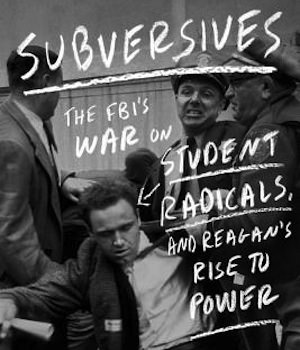
“Subversives: The FBI’s War on Student Radicals, and Reagan’s Rise to Power” A book by Seth Rosenfeld
The protests at UC Berkeley in the 1960s — and the conservative backlash that followed them — helped propel Ronald Reagan to the governor’s mansion and then to the White House. Since then, a generation of conservative adoration has transformed Reagan into the embodiment of Republican virtue. Seth Rosenfeld’s new book, “Subversives: The FBI’s War on Student Radicals, and Reagan’s Rise to Power,” challenges that portrait in a unique and compelling way. Drawing on FBI files and scores of interviews, Rosenfeld shows how Reagan formed a partnership with the FBI that began in the 1940s and lasted at least until J. Edgar Hoover’s death in 1972. During that time, Reagan, Hoover and their allies sabotaged the careers of law-abiding citizens, defended reckless police violence and exploited an appalling double standard in the political use of FBI intelligence. Rosenfeld’s findings will have little effect on Hoover’s reputation, which has worsened steadily since his death. But they might aid former UC President Clark Kerr’s, and they certainly should be set against the gentler treatments that helped Reagan ascend to GOP heaven.
Rosenfeld’s central story begins in 1947, when Reagan informed on fellow members of the Screen Actors Guild. Shortly after becoming the guild’s interim director, Reagan received a visit from FBI agents who asked him about Communists in the film industry. He said that two actresses who opposed his candidacy “follow the Communist line” and offered the names of eight more actors and actresses. A few months later, Reagan’s executive secretary turned over another list of names that included Lloyd Bridges and Lee J. Cobb. As Rosenfeld observes, “Reagan — whose duty it was to protect the interests of his union members — was doing the very thing most likely to jeopardize their careers.”
Subversives: The FBI’s War on Student Radicals, and Reagan’s Rise to Power
By Seth Rosenfeld
Farrar, Straus and Giroux, 752 pages
Historians have long known about Reagan’s decision to name names, but his premier biographer, Lou Cannon, mentions Hoover only once in “Governor Reagan: His Rise to Power” (2003). Rosenfeld uses new source material to track Reagan’s relationship with the FBI in general and with Hoover in particular. Reagan spent much of the 1950s barnstorming for General Electric, but Rosenfeld reports that he was also trying to interest Hoover in a television series about the bureau. Reagan’s anti-Communist rhetoric sharpened, and in 1961, he received another visit from FBI agents to investigate his claim that the Communist Party had “ordered once again the infiltration” of the film industry. “They are crawling out from under the rocks,” Reagan had told supermarket executives in Chicago. When the agents asked for evidence, he admitted he had none.
Reagan also told the agents that film executives weren’t hiring him because of his anti-Communist views. He had no evidence for that claim either, but the irony is rich. Scores of Hollywood leftists were ruined because government officials, aided by informers, considered their political beliefs subversive. And thanks to Rosenfeld, we now know that Hoover also scuttled a job opportunity for a university president whom he deemed “no good.” When President Johnson was considering Kerr for a Cabinet position in 1964, Hoover sent Johnson damning FBI intelligence about Kerr that he knew to be false. Johnson promptly scratched Kerr from his list of candidates. Kerr knew nothing about Hoover’s smear until Rosenfeld informed him decades later.
|
To see long excerpts from “Subversives” at Google Books, click here. |
Hoover kept Reagan at arm’s length for years, but he frequently intervened on his behalf. At Reagan’s request, the FBI investigated his daughter Maureen’s turbulent love life, and as Reagan was preparing to run for governor, agents discovered that his son Michael had befriended the son of a notorious Mafia boss. Hoover discreetly alerted Reagan, who was grateful for the courtesy. Later, when Frank Sinatra campaigned for Reagan, FBI agents worried that the singer’s mob associations would harm their ally. Hoover wrote that he would personally brief Reagan about Sinatra. The mob, it seems, wasn’t subversive in the relevant sense. If it had been, Reagan’s relationship with mob fixer Sidney Korshak, whom Reagan met through his agent Lew Wasserman, might have placed him on the FBI’s Security Index decades before. (Rosenfeld makes no mention of that connection.) Hoover and Reagan thought the real subversives were on campus, and in 1966, Reagan met with UC Berkeley staff and faculty who were also FBI informers. They briefed him about “communist efforts to influence the students” and argued that Kerr’s removal was vital to the university’s future. One paid informer, Berkeley professor Hardin Jones, proved to be too much even for the FBI. Agents noted that he was sincere but at times “seemed to be carried away.” The FBI stopped paying him in 1965, but Jones and Alex Sherriffs, a high-ranking UC employee and FBI informer, later joined the Reagan administration.
Having demolished Pat Brown in the general election, Reagan underwent a background investigation, during which he claimed no affiliations with subversive organizations as defined by Executive Order 10450. A 1946 FBI report, however, described him as a sponsor of the Los Angeles Committee for a Democratic Far Eastern Policy, which was covered by that order. Yet the FBI gave Reagan a pass in its final report. That leniency was significant; the bureau had ruined the careers of others with only slight connections to such organizations.
Two weeks after Reagan took office, FBI agents came to his home to brief him on subversive elements in Berkeley. He asked for additional intelligence on Kerr, liberal UC regents and any upcoming protests. Less than a week after that, the regents fired Kerr with Reagan in attendance. Regent Edwin Pauley, who had resented Kerr’s liberal outlook ever since the university’s loyalty oath controversy in the early 1950s, led the charge. Pauley had shared confidential FBI files with CIA Director (and Berkeley classmate) John McCone, who suggested that President Johnson order the FBI to “clean out the Communists and get rid of Clark Kerr.”
Subversives: The FBI’s War on Student Radicals, and Reagan’s Rise to Power
By Seth Rosenfeld
Farrar, Straus and Giroux, 752 pages
Neither Reagan nor Hoover ever entertained the possibility that student protests were responses to systemic problems rather than subversion. An accomplished labor negotiator before he returned to academia, Kerr actually knew a few Communists, and he was far less likely to mistake dissent for international conspiracy. Student activist Mario Savio, who had spent time in Mississippi as a civil rights worker, also knew that America’s most serious domestic problems had little to do with Moscow. But in 1965, Savio decided to focus on his private life. He married, dropped out of school and looked for work to support his family.
The campus unrest continued without Kerr and Savio, and in 1969, riot police shot dozens of Berkeley protesters and bystanders with birdshot and buckshot, permanently blinding one man and killing student James Rector. Reagan told an Orange County audience, “The police didn’t kill the young man. He was killed by the first college administrator who said some time ago that it was all right to break the laws in the name of dissent.” It was a transparent attempt to blame others for the “bloodbath” he had welcomed in an earlier public remark. Even more outrageously, Reagan aide Edwin Meese told journalist (and now Truthdig Editor-in-Chief) Robert Scheer, “James Rector deserved to die,” an opinion he repeated to Rosenfeld. Some deputies were sanctioned for the shootings but none were convicted, and federal charges were dropped after Reagan pressed U.S. Attorney General John Mitchell. The Reagan administration’s policy — “Obey the rules or get out” — seemed to apply only to university students.
Meanwhile, Hoover expanded COINTELPRO, his counterintelligence program, to target Savio. To support his family, Savio had joined the longshoremen’s union as a ship’s clerk, but the bureau used its influence with an International Longshore and Warehouse Union dispatcher (and FBI informer) to make sure Savio received no work. Savio struggled psychologically and professionally before dying of a heart attack at age 53. Hours after his dismissal from the University of California, Kerr was named chairman of the Carnegie Commission on the Future of Higher Education, where he directed a series of important studies designed to increase access to colleges and universities. But his reputation in the UC system suffered for many years.
With Reagan, of course, the rest is history. In one of his first presidential acts, he pardoned high-ranking FBI officials who had authorized warrantless break-ins at the homes of relatives and friends of Weather Underground fugitives. In announcing the pardons, Reagan said, “The record demonstrates that they acted not with criminal intent but in the belief that they had grants of authority reaching to the highest levels of government.” One of the prosecutors flatly refuted that claim. “That assertion is false,” Francis J. Martin wrote in a New York Times opinion piece. “The FBI’s own documents attest to the fact that it is false. After an eight-week trial, 12 jurors unanimously found it to be false.”
Rosenfeld recounts these and other episodes patiently and reliably. He weaves his findings into a continuous narrative that presumes little prior knowledge of these men or the events they shaped. He also fleshes out that narrative with detailed accounts of supporting characters, most of who aided the FBI and Reagan in their campaign against Kerr and the student radicals.
As an investigative reporter, Rosenfeld is relentless but by no means one-sided. Even as he probes the liaison between Hoover and Reagan, he also corrects some leftist hagiography. His research indicates that Richard Aoki, a leader in the Black Panther Party and UC Berkeley’s Third World Liberation Front, was also an FBI informer. Instrumental in supplying weapons to the Panthers, Aoki later earned a graduate degree, taught at Merritt College in Oakland and become the subject of a flattering documentary film released in 2009. When Aoki died that same year, Black Panther Party co-founder Bobby Seale told a local newspaper that Aoki “was one consistent, principled person who stood up and understood the international necessity for human and community unity in opposition to oppressors and exploiters.”
Subversives: The FBI’s War on Student Radicals, and Reagan’s Rise to Power
By Seth Rosenfeld
Farrar, Straus and Giroux, 752 pages
But Aoki didn’t sound especially consistent or principled when Rosenfeld interviewed him.
When this author asked Aoki whether he had been an FBI informer, during a lengthy interview about his life in 2007, Aoki’s first response was a long silence. After a while he replied, “Oh is all I can say.” When this author asked if he was wrong in understanding that Aoki had been an informer, he replied, “I think you are.” But Aoki added, as if by way of explanation, “People change. It is complex. Layer upon layer.” When pressed further for a yes or no, Aoki again replied indirectly, saying, “I’m denying it. Or ‘no comment’ is the standard response, I think.”
Rosenfeld’s interview with FBI agent Burney Threadgill left little doubt about Aoki’s status. Threadgill described how he recruited and developed Aoki in the late 1950s, when Aoki was well disposed to the FBI. (Hoover had opposed the wartime internment of Japanese, which broke up Aoki’s family.) Readers might agree with Aoki that the situation was complex and with Rosenfeld that Aoki was an FBI informer.
One of the book’s most interesting stories concerns the FBI’s efforts to withhold information about its assistance to Reagan. In an appendix, Rosenfeld details the lawsuits he filed and won over three decades to acquire the relevant FBI documents. The heroes of this saga include San Francisco federal Judge Marilyn Patel, who ruled that “Information regarding acts taken to protect or promote Reagan’s political career, or acts done as political favors to Reagan[,], serve no legitimate law enforcement purpose.” Having studied some 50,000 pages of FBI records, Rosenfeld reaches the following conclusion:
These documents show that during the Cold War, FBI officials sought to change the course of history by secretly interceding in events, manipulating public opinion, and taking sides in partisan politics. The bureau’s efforts, decades later, to improperly withhold information about those activities under the [Freedom of Information Act] are, in effect, another attempt to shape history, this time by obscuring the past.
“Subversives” allows us to see this part of our history steadily, whole and for the first time. It is both a major achievement and a fresh opportunity to consider who, exactly, was subverting what.
Peter Richardson is the author of “A Bomb in Every Issue: How the Short, Unruly Life of Ramparts Magazine Changed America” (2009) and “American Prophet: The Life and Work of Carey McWilliams” (2005).
Your support matters…Independent journalism is under threat and overshadowed by heavily funded mainstream media.
You can help level the playing field. Become a member.
Your tax-deductible contribution keeps us digging beneath the headlines to give you thought-provoking, investigative reporting and analysis that unearths what's really happening- without compromise.
Give today to support our courageous, independent journalists.

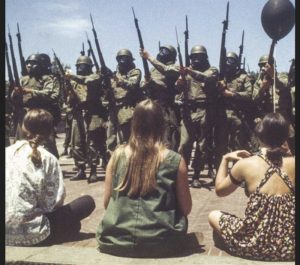
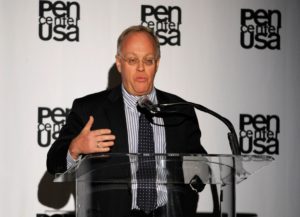

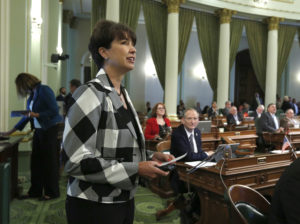
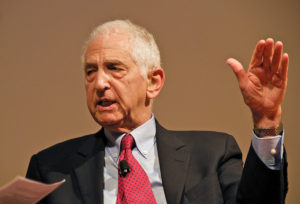

You need to be a supporter to comment.
There are currently no responses to this article.
Be the first to respond.